Press Release
Crypto On-Ramps Go Mainstream: How Paybis Is Leading the Institutional Shift

Is 2025 the Year Crypto On-Ramps Became Real Financial Infrastructure?
The first half of 2025 has revealed a seismic shift in the crypto ecosystem. Once considered speculative access points, crypto on-ramps are now emerging as core components of global financial infrastructure. In Paybis’ latest H1 2025 report, the company highlights how deep-rooted regulatory clarity, a move toward real-time bank rails, and surging institutional flows are redefining the on-ramp landscape.
From the phased implementation of the EU’s Markets in Crypto-Assets (MiCA) regime to the U.S. GENIUS Act offering federal clarity on stablecoins, these changes aren’t just boosting volumes they’re laying the groundwork for how digital assets are used in cross-border payments, treasury functions, and enterprise settlements.
Investor Takeaway
Іnstitutional flows now make up 82% of Paybis’ settled volume. This is no longer a retail-dominated story crypto rails are becoming vital for corporate finance and compliance-led adoption.
What Macro and Regulatory Drivers Are Shaping This Evolution?
Two macro forces are transforming crypto on-ramping into a critical financial backbone:
Regulatory Convergence via MiCA and GENIUS Act: MiCA’s phased rollout in Europe (EMT/ART rules effective from June 30, 2024; CASP licensing effective December 30, 2024) has become a global benchmark. The U.S. followed suit with the GENIUS Act (July 2025), establishing full-reserve requirements and monthly attestations for stablecoin issuers.
Real-Time Banking Rails Replacing Cards: Instant account-based systems are now outpacing cards in major economies. Brazil’s Pix handled over R$26 trillion in 2024, India’s UPI processed ₹25 lakh crore in July 2025 alone, and the U.S. RTP network hit $481 billion in Q2 2025. The EU now mandates pricing parity between instant and traditional credit transfers, incentivizing larger transactions.
Investor Takeaway
Real-time payment systems like Pix and UPI are pushing on-ramp providers toward account-based rails. This shift is compressing card-driven margins and favoring FX-spread-driven models.
How Are Institutional and Retail Behaviors Changing?
Retail Patterns: More Self-Custody, Higher Transaction Sizes
Median transaction value climbed to $604, tracking Bitcoin’s rise from $61K to $93K.
74% of first-time Paybis users opted for self-custody wallets like Ledger Live and Rabby over exchange deposits.
Institutional Adoption: Embedded, Automated, Scalable
Corporate onboarding times dropped by 37%.
Stablecoin swaps are increasingly embedded in Treasury Management Systems (TMS) via APIs.
White-label integrations captured 19% of total market volume, up from 7% YoY.
Investor Takeaway
Retail is going wallet-first, while institutions are embedding crypto into core treasury workflows. On-ramp providers must optimize both fronts: UX for wallets, APIs for corporates.
Which Regions and Rails Are Driving Growth?
Regional volumes are heavily shaped by local payment infrastructure and inflationary dynamics:

This growth correlates with the expansion of high-speed settlement networks and inflation-driven stablecoin demand, especially in Latin America and SSA.
Investor Takeaway
Stablecoins are displacing fiat in high-inflation markets. Look for growth in regions with both regulatory clarity and real-time payment adoption.
How Does Paybis Compare in the Competitive Landscape?
Paybis is outperforming competitors in institutional penetration:

Pricing pressure is fiercest in small-ticket retail, where headline rates dropped ~22% YoY. In contrast, large corporate deals remain relationship-driven, with minimal fee erosion.
Investor Takeaway
Institutional flows remain sticky and margin-resilient. Firms like Paybis that bundle services and optimize treasury flows are best positioned to preserve spreads.
What Does Paybis’ Growth Reveal About Market Structure?
User Growth: +90% YoY in unique verified users.
Volume Growth: +179% YoY in total settled volume.
B2B Dominance: 82% of volume came from business clients.
This growth wasn’t margin-dilutive Paybis’ shift toward OTC and enterprise flows offset tightening spreads. Key enablers included service bundling, custom settlement windows, and multi-rail support via vIBANs.
Investor Takeaway
Paybis’ success is built on infrastructure, not hype. Multi-rail banking and low-friction onboarding now matter more than brand or ad spend.
What’s the Outlook for H2 2025 and Beyond?
Regulatory Divergence, Not Convergence: Global talks on harmonization (IMF, BIS, FSB) remain non-binding. National rules on reserves, attestations, and issuer structures will likely remain fragmented.
Bank-Issued Stablecoins Rise: Projects like JPMorgan’s Kinexys and the Regulated Liability Network are gaining steam, but remain private and restricted.
Layer-2 Activity Grows, But L1 Still Dominates for Enterprises: While Base, Arbitrum, and OP are growing transaction count, most stablecoin settlement value remains on L1 and off-chain bank rails due to liquidity and compliance.
Green On-Ramps Remain Aspirational: ESG and carbon accounting frameworks are fragmented, delaying institutional commitments to “green crypto.”
Investor Takeaway
Prepare for regulatory fragmentation, not a global standard. Institutions need to comply locally while innovating globally multi-jurisdictional agility is key.
Conclusion: From Front-Ends to Infrastructure
The message from Paybis’ H1 2025 report is clear: crypto on-ramps are evolving into regulated FX gateways, powered by stablecoins, real-time banking rails, and API-first design. Retail demand is real, but it’s enterprise flows and compliance-ready infrastructure that are setting the pace.
As the industry enters H2 2025, winners won’t be defined by who has the best marketing or widest reach. They’ll be the providers who’ve already laid the groundwork for a regulated, instant, and institutional-grade crypto economy.
Investor Takeaway
Crypto’s next cycle won’t just reward token pickers it will reward infra builders. Focus on firms with deep banking rails, regulatory foresight, and B2B traction.
Company name: Paybis
Contact name: Innokenty Isers
E-mail: support@paybis.com
Website: https://paybis.com
Country: USA
About Author
Disclaimer: The views, suggestions, and opinions expressed here are the sole responsibility of the experts. No Digi Observer journalist was involved in the writing and production of this article.
Press Release
Suncheon Joins Global Conservation Leaders as South Korea’s “Ecological Capital” Redefines Healing Through Nature
Suncheon has emerged as South Korea’s “Ecological Capital,” joining the world’s conservation leaders with a vision that unites environmental restoration and healing tourism.
Suncheon, Korea South, 30th Oct 2025 – Suncheon’s wetlands revival is drawing global attention as migratory birds return in record numbers to what was once a threatened coastal marsh. Once at risk of disappearing, Suncheonman Bay now stands as a model for ecological restoration, transforming from reclaimed land into South Korea’s “Ecological Capital.” The city’s dramatic turnaround, marked by the return of flocks of hooded cranes gliding over the golden reeds each autumn, showcases how policy, community effort, and environmental vision can create harmony between people and nature.

(Image: Flocks of hooded cranes descend over the golden reeds of Suncheonman Bay. Each autumn, the wetlands turn into a sanctuary for migratory birds—and for visitors seeking to witness one of Asia’s most poetic encounters between nature and life. Photo courtesy of Suncheon City)
Located in South Jeolla Province, Suncheon has redefined urban sustainability by putting nature first. Through bold environmental policy, community collaboration, and global engagement, the city restored its wetlands, revitalised migratory-bird habitats, and positioned itself as both a sanctuary for wildlife and a beacon for healing-centered living.
A Vision Rooted in Restoration
In years past, Suncheonman Bay’s tidal flats and reed beds faced pressure from reclamation, infrastructure, and unchecked industrial development. Recognising the ecological and social value of the landscape, local authorities made an extraordinary decision in 2009: they removed power poles and electrical lines that cut across the wetlands to protect the endangered hooded cranes wintering there. That decision, radical at the time, ushered in a broader transformation that would make Suncheon a living laboratory for ecological restoration.
Over subsequent years, the Suncheonman Bay Wetland Reserve became a thriving refuge for migratory birds and biodiversity, a place where tidal rhythms, reed fields, and quiet landscapes sustain life seldom seen in urban-centric cities.
The Garden That Bridges Nature and City
To shield this sensitive environment from urban sprawl, Suncheon created the Suncheonman National Garden, a 1.12-million-square-metre green buffer zone between the city and the protected wetlands. As Korea’s first national garden of this scale, it features ponds, wildflower meadows, walking trails, and viewing platforms, seamlessly connecting urban life to the natural rhythms of the bay.
The garden’s launch was followed by two major international garden expos, in 2013 and 2023, drawing nearly 10 million visitors and demonstrating that environmental preservation and economic vitality need not be oppositional.
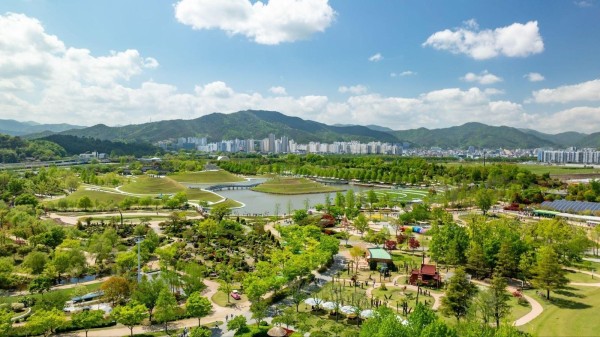
(image: Suncheonman National Garden, Suncheon, South Korea. Established as Korea’s first national garden, the 1.12-million-square-meter green space serves as a buffer between the expanding city and the protected Suncheonman Bay wetlands, balancing ecological preservation with urban life. Courtesy of Suncheon City)
From Preservation to Global Leadership
In 2025, Suncheon stepped onto the global conservation stage, becoming the first local government in Korea to join the International Union for Conservation of Nature (IUCN). At the World Conservation Congress in Abu Dhabi, Mayor Roh Kwan-kyu described the city’s approach:
“We have learned to live not just alongside nature, but in trust with it,” he said. “Suncheon’s experience will become a bridge between ecology and healing for the world.”
The mayor emphasised that this is not a theoretical ideal but a practiced reality within Suncheon.
A New Vision: Healing Through Nature

(image: Flocks of hooded cranes descend over the golden reeds of Suncheonman Bay. Each autumn, the wetlands turn into a sanctuary for migratory birds—and for visitors seeking to witness one of Asia’s most poetic encounters between nature and life. Courtesy of Suncheon City)
Suncheon’s ambitions now reach beyond conservation. The city is cultivating a new paradigm of healing tourism, anchored in its natural and cultural assets. The plan invites visitors to meditate by tidal flats, walk barefoot through reeds, listen to the whisper of grasses, and rediscover balance through sound, food, and stillness. Nearby cultural jewels such as Songgwangsa Temple and Seonamsa Temple are woven into this experience, linking Korea’s spiritual heritage to ecological wellness.
In an era where wellness has become a commercialized pursuit, Suncheon offers something rarely found: the quiet restoration that only nature provides.
A Living Testament to Coexistence
As flocks of hooded cranes descend each autumn over the golden reeds of Suncheonman Bay, the wetlands transform into a sanctuary: for birds, for biodiversity, and for humans seeking refuge from the frenetic pace of modern life. Suncheon stands as a living testament to what cities can become: places that heal rather than harm, where the path to well-being begins not in clinics or spas, but in the wind, the soil, and the shared breath of all living things.
This article was written with the sponsorship of Suncheon City.
Media Contact
Organization: Public Relations Office – City of Suncheon
Contact Person: S.J Kwon
Website: https://www.suncheon.go.kr/tour/
Email: Send Email
City: Suncheon
Country:Korea South
Release id:36335
The post Suncheon Joins Global Conservation Leaders as South Korea’s “Ecological Capital” Redefines Healing Through Nature appeared first on King Newswire. This content is provided by a third-party source.. King Newswire makes no warranties or representations in connection with it. King Newswire is a press release distribution agency and does not endorse or verify the claims made in this release. If you have any complaints or copyright concerns related to this article, please contact the company listed in the ‘Media Contact’ section
About Author
Disclaimer: The views, suggestions, and opinions expressed here are the sole responsibility of the experts. No Digi Observer journalist was involved in the writing and production of this article.
Press Release
Suncheon Becomes the First Korean Municipality to Join the International Union for Conservation of Nature
City Delegation Attends 24th World Conservation Congress as VIP, Opening Global Platform to Share Its Eco-City Model.
Suncheon, Korea South, 30th Oct 2025 – The city of Suncheon has become the first basic-level local government in South Korea to join the International Union for Conservation of Nature (IUCN) and has dispatched an official delegation to the 24th World Conservation Congress (WCC) in Abu Dhabi, marking a historic step onto the international environmental stage.
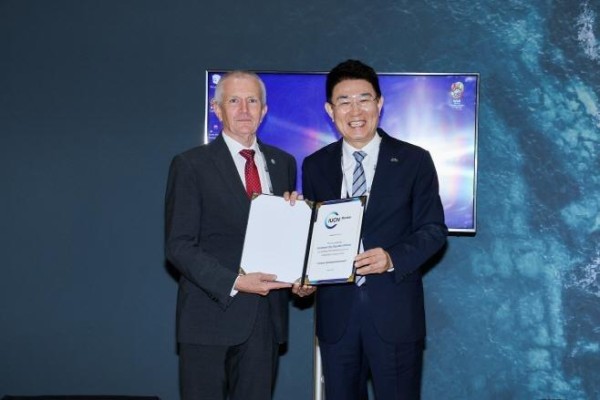
Image: On October 9 in Abu Dhabi, IUCN Deputy Director General Stewart Maginnis presented the membership certificate to Suncheon Mayor Roh Kwan-kyu. /Courtesy of Suncheon City.
Founded in 1948, the IUCN is the world’s largest and most influential environmental network, bringing together over 1,400 member organizations from more than 160 countries, including national governments, local authorities, NGOs, and research institutions. Like the Red Cross, it holds official observer status at the United Nations and serves as an advisory body for UNESCO World Natural Heritage sites.
Suncheon officially gained full membership in August 2025, becoming the first Korean municipality at the basic administrative level to be admitted into the IUCN. The achievement reflects global recognition of the city’s long-term commitment to ecological preservation and sustainable urban development.
Three Decades of Ecological Leadership
Over the past 30 years, Suncheon has led pioneering environmental initiatives such as the Suncheon Bay Wetland Conservation Project, the establishment of Korea’s first National Garden, and the implementation of eco-civilization policies that balance urban growth with biodiversity protection.
The city’s consistent focus on Nature-based Solutions (NbS) — a core strategy championed by the IUCN — has made Suncheon a model of sustainable development. Through its membership, Suncheon now gains an official platform to share its eco-city model with local governments around the world.
“Suncheon’s inclusion in the IUCN community marks a new chapter in our journey toward global ecological leadership,” said Suncheon Mayor Roh Kwan-kyu. “We will continue to pioneer Nature-based Solutions and foster cooperation with international partners to protect biodiversity and build a greener, more resilient planet.”
Global Presence at the World Conservation Congress
On October 9, the Suncheon City delegation attended the opening ceremony of the 24th World Conservation Congress at the Abu Dhabi National Exhibition Centre (ADNEC) as invited VIP guests.
The ceremony brought together more than 6,000 participants, including government officials, international organization representatives, and environmental leaders such as IUCN President Razan Khalifa Al Mubarak. During the event, IUCN Deputy Director General Stewart Maginnis presented the official membership certificate to Mayor Roh Kwan-kyu, symbolizing Suncheon’s formal inclusion in the global conservation community.
Suncheon’s participation at this high-level congress positions the city as a new representative of South Korea in the field of environmental diplomacy, strengthening its partnerships with other eco-cities and international organizations.
Toward a Global Eco-Civilization
Through its IUCN membership, Suncheon plans to expand global cooperation in biodiversity conservation, climate adaptation, and sustainable city planning. The city aims to share its practical experiences in wetland restoration, eco-tourism development, and community-based conservation with partners worldwide — promoting policies rooted in harmony between people and nature.
“This membership is not only an honor but a responsibility,” said a city spokesperson. “Suncheon will continue to serve as a living laboratory of sustainability — where environmental innovation meets community participation.”
About IUCN
The International Union for Conservation of Nature (IUCN) is a global authority on the status of the natural world and the measures needed to safeguard it. Established in 1948, the organization brings together governments, civil society, and scientific experts to drive conservation and sustainable development worldwide. The IUCN advises the United Nations and UNESCO on environmental and heritage protection.
About Suncheon City
Located in South Jeolla Province, Suncheon is widely recognized as Korea’s Ecological Capital. The city is home to the Suncheon Bay Wetland Reserve, one of Asia’s most biodiverse coastal ecosystems and currently listed as a UNESCO World Heritage Site, as well as the Suncheon Bay National Garden, Korea’s first national garden and a benchmark for sustainable urban design.
This article was written with the sponsorship of Suncheon City.
Media Contact
Organization: Public Relations Office – City of Suncheon
Contact Person: S.J Kwon
Website: https://www.suncheon.go.kr/tour/
Email: Send Email
City: Suncheon
Country:Korea South
Release id:36336
The post Suncheon Becomes the First Korean Municipality to Join the International Union for Conservation of Nature appeared first on King Newswire. This content is provided by a third-party source.. King Newswire makes no warranties or representations in connection with it. King Newswire is a press release distribution agency and does not endorse or verify the claims made in this release. If you have any complaints or copyright concerns related to this article, please contact the company listed in the ‘Media Contact’ section
About Author
Disclaimer: The views, suggestions, and opinions expressed here are the sole responsibility of the experts. No Digi Observer journalist was involved in the writing and production of this article.
Press Release
FISH Token Launches in Norway – Pioneering the Future of Sustainable Aquaculture Investment Through Blockchain
Fish Token aims to revolutionize food production with real-world asset tokenization and eco-friendly innovation.
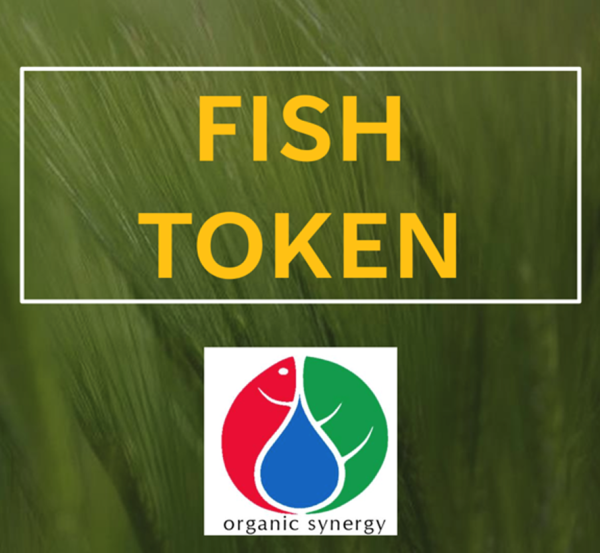
Norway, 30th Oct 2025 – In a groundbreaking development for the sustainable investment and blockchain sectors, FISH TOKEN has officially launched in Norway, introducing the world’s first real-world asset (RWA) token dedicated to environmentally responsible seafood production. Combining cutting-edge aquaculture and aquaponic technology, logistics, and waste solution development with blockchain technology, the project seeks to transform how the world grows, distributes, and invests in essential food systems.
Reimagining Food Production Through Tokenization
FISH TOKEN stands at the intersection of sustainability and financial innovation. Built to seek stable high yield from one of the most important sectors internationally and at the same time securing funding for premium quality aquaculture projects worldwide.
FISH TOKEN is positioned at the forefront of the seafood industry’s full value chain with mandatory investment in both existing listed and non-listed companies and early-stage high-yield companies in the sectors of aquaculture, aquaponics, technology, logistics and sales.
By tokenizing this model, FISH TOKEN allows investors around the world to participate in a $1 billion investment program over five years. Each FISH TOKEN, priced at $1 USD, represents fractional ownership in the company’s aquaculture investments and gives holders access to annual profit distributions equivalent to 60% of generated business profits.
Empowering Investors Through Real-World Asset (RWA) Tokenization
The RWA tokenization market, projected by PwC to reach $16 trillion by 2030, represents one of the fastest-growing segments in global finance. FISH TOKEN aims to lead this transformation by converting physical aquaculture assets into blockchain-based tokens that are transparent, tradeable, and globally accessible.
Each token holder benefits from:
- Annual Profit Sharing: 60% of net business profits distributed as Fish Tokens or stablecoins (USDC).
- Voting Rights: Participation in decentralized governance (DAO) for key operational decisions.
- Liquidity Access: Planned listings on upcoming RWA exchanges in 2026 to enable open-market trading.
- Asset Appreciation: As production capacity and market share grow, token value is expected to rise in tandem.
The project’s tokenomics allocate 75% of supply for public sale, with the remaining tokens reserved for team members, private investors, liquidity, marketing, and staking rewards. All founders and team tokens are subject to a three-year vesting period, a reflection of long-term commitment and confidence in the project’s mission.
The FISH TOKEN Team
Our team combines deep expertise in pure fish farming, facility development, traditional finance, fisheries science, Technology development, Logistics, Seafood marketing and hydroponic agriculture to close the gaps between the food producers and the financial market of crypto.
The base of the FISH TOKEN team has strong roots to the aquaculture industries worldwide and has extensive competence relevant to making good quality decisions for future investments. We aim to deliver attractive positions in scalable companies by strong risk assessment.
All investments are subject to objective due diligence processes combining biology and technology risks, authority and license risks, team competence and market standings in addition to economic scalability and profit.
By the power of the team, the FISH TOKEN team aims to take strong strategic positions as private equity actors as well as passive revenue seekers.
Sustainability Meets Profitability
What makes FISH TOKEN unique is its real-world asset Foundation. Each token is tied to tangible assets within the seafood and vegetable production industries, ensuring stable value and long-term income potential.
The company’s approach focuses on three interconnected goals:
- Sustainable Production: We aim to invest in profitable companies focusing on creating a circular ecosystem where fish and vegetables are grown symbiotically.
- Resource Efficiency: Reusing nutrients, heat, and CO₂ emissions to reduce waste as well as food-factors and production efficiency.
- Economic Growth: Leveraging by-products such as algae, organic fertilizers, protein (like Collagen), Omega 3, biogas, and pet food to create multiple revenue streams.
“Every drop of water and every gram of nutrient is reused to generate value,” added Co-Founder Børge Søraas, a recognized expert in recirculating aquaculture systems. “We’re redefining food production efficiency while giving investors meaningful participation in environmental progress.”
By repurposing nutrient-rich wastewater from fish farms to grow vegetables, we create a closed-loop system that reduces environmental impact, conserves water, and ensures year-round productivity. This integrated approach offers strong potential for sustainable growth and long-term returns.
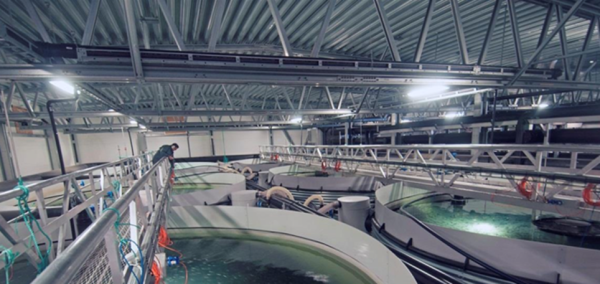
“FISH TOKEN is not just another crypto project; it’s a global sustainability mission,” said Founder Trond Vegger, a veteran industrialist in aquaculture and renewable food production. “We’re giving investors the chance to be part of a cleaner, smarter, and more sustainable food system that benefits both the planet and their portfolios.”
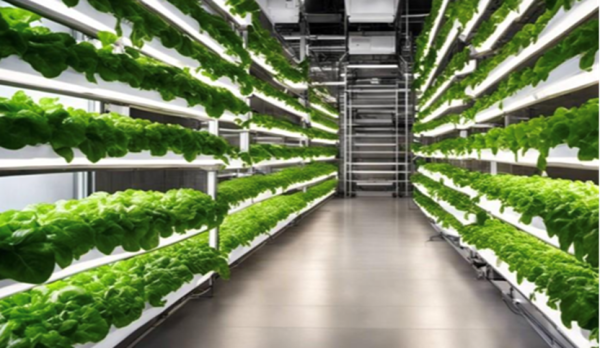
Norway Leads the Charge in Sustainable Aquaculture
Norway has long been recognized as a global leader in sustainable aquaculture, and FISH TOKEN builds on this legacy. The country’s commitment to environmentally conscious seafood production and transparent industry practices has made it an ideal home for this initiative.
By merging blockchain transparency with eco-innovation, FISH TOKEN democratizes access to aquaculture investment, empowering everyday investors to support sustainability while earning income. The model encourages broader participation, traceable supply chains, and decentralized governance, paving the way for a more transparent and inclusive seafood economy.
Funding the future of Seafood production
As global demand for nutritious food rises alongside environmental regulations and consumer expectations, the need for scalable, sustainable seafood production is more urgent and more financially attractive than ever. This transformation requires capital and FISH TOKEN is designed to unlock it. Whether someone is an investor seeking long-term returns or a seafood innovator looking for funding, FISH TOKEN connects capital with impact. Every token holder becomes a stakeholder in the future of seafood, helping build a circular, eco-efficient industry with global relevance and year-round productivity
A Vision Built on ESG Principles
At its heart, FISH TOKEN’s mission aligns with Environmental, Social, and Governance (ESG) principles. The company integrates AI-based water quality monitoring, energy-efficient systems, and sustainable fish feed alternatives to reduce environmental impact while maintaining profitability.
“Our approach combines technology, biology, transparency, trust, and finance,” said Co-Founder Frode J. Dvergsdal, a strategic planner for the project. “Through blockchain, we’re ensuring every transaction, every production cycle, and every environmental decision is recorded immutably. It’s not just sustainable; it’s verifiable.”
Roadmap to 2030: From Concept to Global Expansion
FISH TOKEN’s roadmap lays out a clear and ambitious plan for growth:
- Q1 2026: Private share conversion and early investor round
- Q3 2026: First public sale valued at $15 million; RWA exchange listing
- Q2 2027: Launch of FISH TOKEN staking pool
- Q4 2027-2030: Expansion into aquaponic farming, seaweed and algae production, and biogas facilities across the USA, Europe, and Asia
- 2030: Global tokenization of additional aquaponic assets under the FISH TOKEN umbrella
Global Food Demand and the Rise of Aquaponics
As the world’s population approaches 10 billion by 2050, the need for efficient and eco-friendly protein sources is becoming urgent. Traditional agriculture and fishing have reached their environmental limits, making aquaponics, a system that combines aquaculture with hydroponic farming, a vital solution.
This system uses 90% less water than traditional farming and produces seven kilograms of vegetables for every kilogram of fish, creating a model that supports both food security and climate goals.
“We’re building an ecosystem where sustainability and profitability coexist,” said Co-Founder Jonas Ntiako, an expert in RAS systems. “The FISH TOKEN initiative gives investors the unique opportunity to be part of this future, a future where every investment nourishes both people and the planet.”
Watch, Learn, and Invest in the Future
To see how FISH TOKEN is changing the face of sustainable investment, visit their official YouTube channel for insights into aquaponic innovation, behind-the-scenes updates, and interviews with the founders.
For additional information, visit www.fish-token.com or follow LinkedIn updates here.
Media Contact
Organization: Fish Token
Contact Person: Trond Vegger
Website: https://www.fish-token.com/
Email: Send Email
Country:Norway
Release id:36326
The post FISH Token Launches in Norway – Pioneering the Future of Sustainable Aquaculture Investment Through Blockchain appeared first on King Newswire. This content is provided by a third-party source.. King Newswire makes no warranties or representations in connection with it. King Newswire is a press release distribution agency and does not endorse or verify the claims made in this release. If you have any complaints or copyright concerns related to this article, please contact the company listed in the ‘Media Contact’ section
About Author
Disclaimer: The views, suggestions, and opinions expressed here are the sole responsibility of the experts. No Digi Observer journalist was involved in the writing and production of this article.
-
Press Release1 week ago
Emdoor Digital Shines at Hong Kong Electronics Fair, Ushering in a New Era of Intelligence with All-Scenario AI Terminal Devices
-
Press Release5 days ago
Breaking Barriers for Entrepreneurs: Why Nicholas Sgalitzer Believes NexTech Labs is the Missing Link for Startups
-
Press Release6 days ago
10 Questions to Ask Before Fertility Treatment, with Project Life
-
Press Release2 days ago
ReyVend Unveils Next-Generation AI Vending and Smart Cooler Platform, Pioneering the Future of Automated Retail
-
Press Release6 days ago
Premier Glow Lights Up the Party Scene with Fresh LED Novelties and Night-Golf Solutions
-
Press Release6 days ago
Lykyn Smart Mushroom Grow Kit The Easiest Way to Grow Gourmet Mushrooms at Home
-
Press Release4 days ago
Ustyle Magazine Redefines Digital Media with Fashion Beauty and Lifestyle Trends
-
Press Release3 days ago
XNAP Token Set to Launch on Major DEX Platforms This November 2025 — Fueling the Synapse Power Ecosystem



